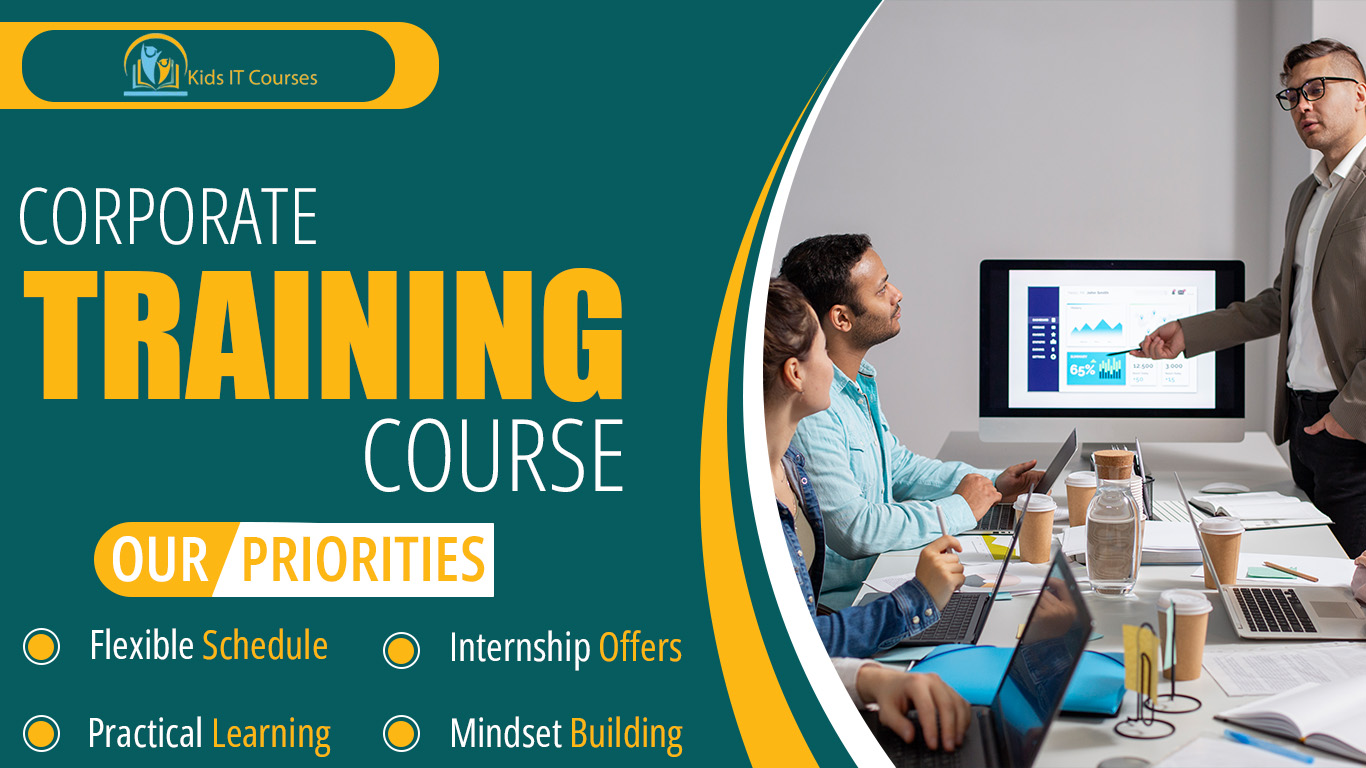
Corporate Training Course for Kids
Definition
• Corporate training teaches work skills. Kids learn how offices work.
• They practice teamwork and sharing. Helping friends and solving problems.
• Kids learn to speak clearly. Talking well is important.
• They understand time management. Doing tasks on time.
• Kids learn to use computers. For work and projects.
• They build confidence to lead. And help others succeed.
• It prepares kids early. For future jobs and careers.
Importance
• It teaches work skills. Kids learn how jobs work.
• Builds teamwork habits. Kids practice working with others.
• Helps with communication. They learn to talk clearly.
• Teaches problem-solving. Kids find smart solutions.
• Shows time management. How to finish work on time.
• Builds confidence early. Kids feel ready for future.
• Prepares for real world. Gives a strong head start.
Advantages for Freelancing
• Kids learn teamwork. They work well with others.
• It builds confidence. Kids speak and lead.
• They learn problem solving. Finding smart solutions.
• Kids understand responsibility. They finish tasks on time.
• It teaches communication. Clear and kind talking.
• Kids get real skills. For future school and work.
• It helps make friends. And feel part of groups.
Session 1 : What is Corporate Training?
What does “corporate training” mean in simple words?
Real-life example: Learning to use a new app at work
Why companies train their employees
Types of training: onboarding, skill development, compliance
How training helps people and businesses grow
Fun comparison: Learning at school vs. learning at work
Activity: Think of a skill you’d like to learn on the job
Session 2 : Learning in the Workplace
How do adults learn at work?
Real-life example: Team learning sessions
Methods: in-person, online, hands-on
Why training works better when it’s interactive
How to make learning enjoyable and engaging
Roleplay: Be a trainer for your classmates
Activity: Make a fun quiz about a topic you know
Session 3 : Planning a Training Program
Steps to create a training program
Real-life example: Training new customer service staff
Setting goals for what learners will achieve
Making a simple plan with topics and activities
Activity: Design a 1-day training session plan
Session 4 : Delivering Training Sessions
How trainers teach skills to employees
Real-life example: Tech workshop at a company
Using stories, examples, and practice activities
Speaking clearly, being patient, answering questions
Activity: Present a mini-training session to your group
Session 5 : Training Tools and Technology
Common tools used in modern training (Zoom, LMS, quizzes)
Real-life example: Learning with online courses
How digital tools make training easier
Activity: Explore a learning platform and share your favorite feature
Session 6 : Teamwork and Communication in Training
Why teamwork matters in learning
Real-life example: Group activities in workshops
How trainers and learners help each other
Listening, sharing ideas, and giving feedback
Activity: Team exercise to solve a business scenario
Session 7 : Measuring Success of Training
How do we know if training worked?
Real-life example: Feedback forms and performance checklists
Tracking improvements after training
Updating training based on what learners need
Activity: Create a feedback form for your session
Session 8 : Growing with Continuous Learning
Training never stops – how we keep learning on the job
Real-life example: Monthly skills sessions at companies
Lifelong learning and professional development
How to stay up to date in any field
Activity: Make a “learning goals” list for your dream job
Bonus Materials
Printable “Training Plan Template”
Workplace skills checklist (soft + hard skills)
Mini video lessons on delivering training
Interactive learning games
Certificate of Completion for Corporate Training Basics
